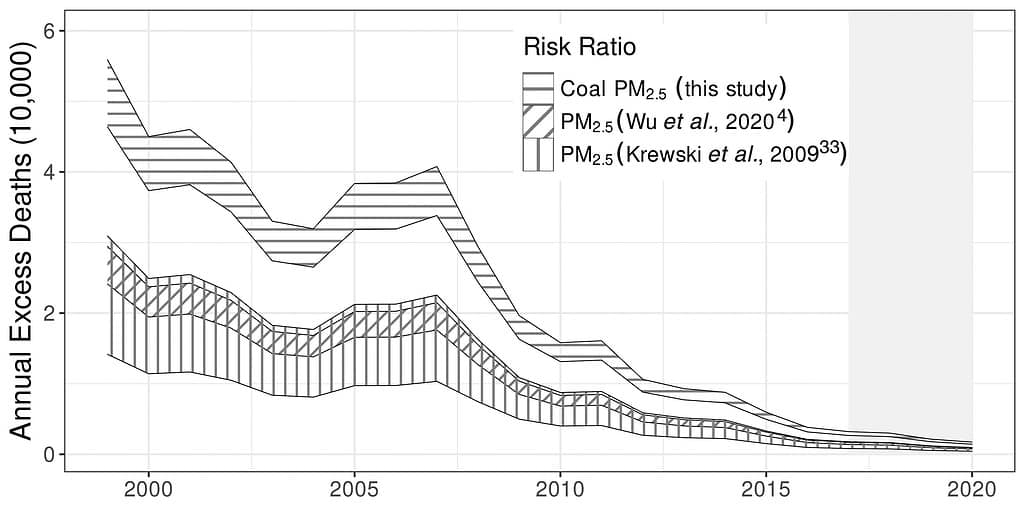
Studies have routinely shown that exposure to fine particulate pollutants — known as PM2.5 because these particles are 2.5 microns or less in diameter — significantly increases the risk of all-cause mortality. However, not all of these particles are equal. A new study from researchers at George Mason University, the University of Texas, and the Harvard T.H. Chan School of Public Health uncovered a grim fact: fine particulate pollutants (PM2.5) from coal-fired power plants pose more than double the mortality risk of PM2.5 from other sources.
Coal: much deadlier than we thought
Delving into U.S. Medicare and emissions data spanning from 1999 to 2020, the researchers found a staggering 460,000 deaths attributable to coal PM2.5. Most of these occurred between 1999 and 2007, coinciding with peak coal PM2.5 levels. This contradicts prior assumptions that coal PM2.5’s toxicity mirrored that of other PM2.5 sources.
Lucas Henneman, the study’s lead author, points out the significant underestimation of coal PM2.5’s mortality impact. He suggests that this insight could steer policymakers toward more effective air quality improvements, like stricter emissions controls or a shift to renewable energy sources.
“PM2.5 from coal has been treated as if it’s just another air pollutant. But it’s much more harmful than we thought, and its mortality burden has been seriously underestimated,” said lead author Lucas Henneman, assistant professor at George Mason.

The team analyzed emissions from 480 coal power plants across the U.S. They tracked how wind spread sulfur dioxide and tracked its conversion into PM2.5, creating detailed exposure maps for each plant. By correlating these maps with extensive Medicare records, representing over 650 million person-years (years of life for every person), the researchers assessed the health impacts of exposure to coal PM2.5.
Their findings were striking: a 1.12% increase in mortality risk for every microgram per cubic meter increase in annual average coal PM2.5. Notably, coal-related pollution accounted for 25% of all PM2.5-related deaths among Medicare enrollees before 2009.
Deaths from coal plants decreased by 95% since 1999
The researchers also ranked coal-fired power plants by their impact on mortality, identifying 10 plants linked to at least 5,000 deaths each. This data, visualized in a public online tool, adds a layer of transparency to the study.
But the good news is that the average level of coal PM2.5 in the U.S. fell from 2.34 μg/m3 in 1999 to just 0.07 μg/m3 by 2020. Interestingly, the study noted a sharp decline in coal-related deaths after 2007, averaging 43,000 annually before dropping to only 1,600 by 2020. That’s a staggering improvement, equivalent to a 95% drop in premature deaths.

Corwin Zigler, the study’s senior author, views this as a “success story” of U.S. policies reducing coal pollution’s burden. Yet, he stresses the ongoing need for cleaner energy solutions.
“Coal power plants were this major burden that U.S. policies have already significantly reduced. But we haven’t completely eliminated the burden — so this study provides us a better understanding of how health will continue to improve and lives will be saved if we move further toward a clean energy future,” Zigler said in a press release.
As coal remains a significant energy source in the U.S. and globally, the study’s findings are crucial for informing future energy and environmental policies. The scientists undescore the importance of balancing energy needs with environmental and health considerations.
The findings appeared in the journal Science.









